Underground Man: The Curious Case of Mark Zborowski and the Writing of a Modern Jewish Classic
The most influential of all popular renderings of Eastern European Jewry in the English language and, arguably, the book that Jewish historians of the region loathe more than any other, is Life is with People. Few books written in the last half-century have more resolutely enveloped the Eastern European Jewish past in nostalgic amber. It was, to be sure, only one of a cascade of books, some of them translated from Yiddish, that sought to do much the same thing in the midst or the immediate wake of Hitler’s war, among them Maurice Samuel’s The World of Shalom Aleichem, Bella Chagall’s memoir Burning Lights, Abraham Joshua Heschel’s elegy The Earth is the Lord’s, and Roman Vishniac’s book of photographs Polish Jews. But Life is with People was the most ambitious of the lot. Published in 1952, it sought to capture an entire civilization from cradle to grave in 400-odd pages of accessible, even buoyant prose. The world it explored was, it insisted, continuous with—but also distinct from—everything around it, not quite part of Russia or Poland yet inside both, a kind of island of unadulterated Yiddishkayt before it was diluted, then destroyed.
The book—originally subtitled “The Jewish Little-Town in Eastern Europe” and altered once it appeared in paperback in the early 1960s to “The Culture of the Shtetl”—concentrates on the essence of this culture, which, as it sees it, was the “shtetl.” Shtetl is Yiddish for small market-town, and Life is with People examines shtetls not in their considerable variety but as instances of a single ideal type presented in the present tense, as if it still existed.
The book’s enduring appeal (it went through several editions, sold more than 100,000 copies, and is out of print now for the first time in almost 60 years) can probably be traced to its sweetness; its blend of collective genealogy and ethnographic Jewish lore. It is the rare commemoration that leaves the reader feeling good, even though the world it depicts has been obliterated. Its tone is conversational, and it takes the reader through the rhythms, the sounds of the Jewish week starting with the Sabbath, and on to schooldays, workdays (depicted, despite the pervasive poverty of Eastern European Jewry, mostly in cheery tones), marriages, circumcisions, and deaths. It is an ethnography that is also a “how-to” book (“Prayers are accompanied by a rocking movement, from the waist to the toes”), and yet one that understands how to satisfy its readers by doing little more than nudge them toward an unobtrusive voyeurism.
When Tevye sings the famous lines “If I were a rich man, I’d have the time I lack / To sit in the synagogue and pray / And maybe have a seat by the Eastern Wall,” in Fiddler on the Roof, he is actually versifying a passage from the second chapter of Life is with People: “the men who sit along the Eastern Wall are pre-eminently the learned and the rabbi . . .” Later editions of the Schocken paperback featured a blurb from Fiddler’s lyricist Sheldon Harnick. “Life Is with People told us about the life in Jewish villages as no other book.” Indeed, Schocken also marketed it as part of a box-set of a half-dozen books that were necessary reading for every literate Jew. Bernard Malamud consulted the book when he was writing his Pulitzer Prize-winning 1967 novel about a blood libel case in Tsarist Russia, The Fixer.
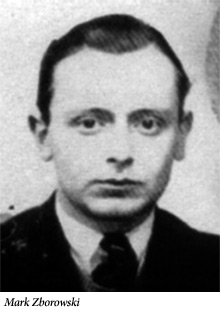
The study that culminated in Life is with People was part of the Columbia University Research in Contemporary Cultures project, headed up by the two leading cultural anthropologists of the period, Margaret Mead and Ruth Benedict, and funded, oddly enough, by the Office of Naval Research. But its co-author and central intellectual figure was Mark Zborowski. Mead appears to have thought of Zborowski as the perfect insider-outsider: someone “who combined . . . the living experience of shtetl culture . . . and the disciplines of history and anthropology.” The book, she added in the Preface, was “the realization of a plan [he had] cherished for many years.” This was true, or almost true, but it also omitted a great deal, most of which Mead didn’t know. Zborowski was not really from a shtetl but from Uman, a Ukranian town of 28,000, and though he might, conceivably, have cherished the idea of writing an ethnology of Eastern European Jewry, it was not a culture that he himself held dear. In fact, he had been estranged from it since adolescence, and his most significant professional experience was not as an anthropologist (he never really received a doctorate, as he sometimes claimed, from the Sorbonne), but as a Soviet spy.
Zborowski, whose GPU codenames included Mack, Max, Tulip, Kant, and Etienne, infiltrated the Trotskyist circle in Paris in the 1930s, and—though he probably never murdered anyone personally—several of his anti-Stalinist acquaintances died sudden, violent, and mysterious deaths. Indeed, when Zborowoski’s work was done in Paris and Leon Trotsky’s son, Lev, along with many others, was dead, his GPU handlers tried to get him to Trotsky’s lair in Coyoacan, Mexico in order “to get to the OLD MAN.” Zborowski, however, appears to have preferred to continue his anthropological studies at the Sorbonne, and contrived to remain in Paris. In Richard Lourie’s 1999 The Autobiography of Joseph Stalin: A Novel, Stalin muses about his gratitude to Zborowski whose reports, he says, are “concise, to the point without a wasted word.” In the 1956 Senate subcommittee hearing which would eventually lead to his conviction and imprisonment for perjury, Zborowski acknowledged that he was aware that Stalin took special interest in his work: “I heard about it, yes,” he admitted, laconically.
What, if anything, does Zborowski’s biography imply with regard to how one now reads his reassuring account of the Jewish past in Life is with People? True, books should not be conflated with the biographies of their authors, and it would be a mistake simply to collapse the activities of Zborowski as spy and anthropologist, even if their skill-sets overlap. Nonetheless, it remains striking how similar his “field-reports” to both Stalin and Trotsky (often giving drastically different accounts of the very same events) are in texture to his ethnographic work on the shtetl.
Scholars, most prominently anthropologist Barbara Kirshenblatt-Gimblett, have written insightfully about the evolution of Life is with People, its ethnographic failures and its place in mid-century American anthropology. But when the book is reread with an eye fixed on Zborowski’s own life, it emerges as a different, more intriguing text, a work infused with not inconsiderable feeling and occasionally startling insight, indeed with insights that cut against the grain of the book.
Much of Zborowski’s life was conducted behind curtains. Yet, it can now be described in some detail, despite major gaps, because of newly accessible Russian sources, declassified FBI data, and Margaret Mead’s papers, housed in the Library of Congress. Mead’s project, Columbia University Research in Contemporary Cultures, was launched in 1946 to examine cultures touched, in one way or another, by the Second World War (Russian, Polish, Czech, Chinese, Japanese, and so on). Jews were added to the mix rather late, and the transcripts of the researchers’ meetings on the “Jewish Book” involve leading anthropologists, including Mead, Conrad Arensberg, and Ruth Landes, and offer a vivid glimpse into Zborowski’s central role in the project.
Unsurprisingly, Zborowski was not given to self-revelation. But amidst the huge body of material about Jews collected for Mead’s project—more than 100 transcripts of interviews with Eastern European Jews, summaries of memoirs and works of Yiddish literature, translated bits and pieces from contemporaneous memorial books (yizker bikher) published by survivors, meticulously sketched maps of towns, transcripts of jokes, depictions of local deviants, saints, and others—is an interview with Zborowski about his childhood and youth that is probably the most honest statement he ever recorded. He provided the information in 1947, just before anti-communism surfaced as a major post-war preoccupation, two years after his espionage work had ended, and almost a decade before he was unmasked. He seems to have felt safer from detection, freer to talk, than ever before or afterwards.
His childhood, as he tells it, was spent in Uman, where he was born in 1908, and which he insisted on calling a shtetl. His family was solidly middle-class, (wealthy by Bolshevik standards, as he later put it), and he was the youngest of seven siblings. His father was a shopkeeper, a mildly devout Hasid who was nonetheless open to reading modern literature, in which his mother also indulged. Still, this wasn’t an intellectually flexible or free-spirited home. Zborowski’s recollections range from cool to hostile. He recalls little about his siblings except for the fights he had with them. As the youngest, he had no room, or even bed, of his own, and had to “wander around” nightly in search of a place to sleep.
One of his most vivid boyhood memories is of harassing the local Bratslav Hasidim, known as the “Dead Hasidim” due to their refusal to select a successor to their founding leader, Rabbi Nachman, who had died in Uman a century earlier. The Bratslavers were ecstatic even by hasidic standards and known to attract the poorest and most marginal members of Jewish society. “We boys were standing in the doors and windows of the [synagogue], pulling them by their clothes, spitting in their faces, and throwing stones and dirt, while they were dancing and singing their prayers.”
After the revolution, Zborowski volunteered at a communist library, and when his father learned of his work, he beat him with his mother watching closely, insisting only that he not be hit on the head. Of Sabbath and festivals—the subject of glowing depictions in Life is with People (“Sabbath brings joy of the future into the shtetl. . . . On no point is there more unanimity . . .”)—he describes only countless, oppressive rules, and warnings that “if we weren’t good we would be torn to pieces by the devil.”
At fourteen, Zborowski left the Soviet Union with his family for Poland, first Lvov, then Lodz, where it is unclear how his father earned a living. “Before, he was a very important member of the community. Then, they took his store, they took everything away. They took his honor. After that, he stopped paying attention to me.” At least part of what Zborowski meant was that his father gave up monitoring his son’s behavior. He remembers himself as a radical young adolescent walking around Uman with grenades in his pockets.
Zborowski’s recollections of the revolution and its aftermath are permeated with loss: “In my case, everything was undermined.” With the disappearance of his father’s money, the “foundations” of their life as a family were gone. Zborowski insists that the reason for his father’s fury over his communist activity—the beating over his library work was the worst he’d ever undergone—was because of the cost to his communal stature. Elsewhere in the transcripts, Zborowski muses, “My parents despised people who cursed. They called them ‘proste [Y]idn,’ crass Jews.” No beliefs, certainly not those picked up from Marxism, weighed quite so heavily on Zborowski as did his preoccupation with the gap separating high-class sheyne Yidn, from such lower-class Jews.
Zborowski left Poland for France in 1928, probably to avoid imprisonment. He and his wife, Regina, were already married and both were communists. However, he later told friends, it was only in Grenoble, where he was working his way through university as a busboy, that he came to understand Marxism. He was stunned at the indifference of bourgeois women at his hotel who “looked right passed him,” not even bothering to cover themselves when he delivered breakfast to their rooms. He was approached by a Soviet agent staying at the hotel who pushed the right buttons. The recruiting agent dangled the possibility of tuition-free study in Russia, and told him that reparation would be easier if he cleansed himself of his bourgeois taint as the son of a storeowner by monitoring the activities of anti-Soviet Trotskyists. In 1933, he moved to Paris and was so successful that plans to return to Russia were put aside.
To most of his new Trotskyist comrades—the group was small, factionalized, and hungry for new members—he seemed unimpressive, little more than a willing volunteer at its Parisian library. “Colorless . . . rather like a mouse” and “not conspicuous in any way . . . There was nothing you could grapple with, except for his insignificance.” Such comments were typical, while others (like the characterization of him by one leading member of the group as “that dirty, Polish Jew”) were more vicious. However, he contrived to bump into Lev Sedov, Trotsky’s son and the movement’s European head, in a hallway at the Sorbonne, and befriend him. Soon he was adopted as Sedov’s right-hand man, working with him almost daily as an unpaid, all-but full-time assistant. The movement had few native Russians (most had been jailed, or silenced by Stalin), and Zborowski showed himself willing to perform any chore, however trivial, in a group where nearly everyone argued about quite nearly everything. (Sedov’s own wife belonged to a different faction from that of her husband.)
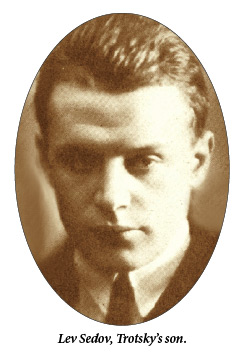
When questioned at a Senate subcommittee hearing as to whether or not he “was given an assignment to lure [Sedov to] . . . where Soviet agents would assassinate him,” Zborowski admitted that “At a very later time, I was given such an assignment,” but added that he failed to carry it out. Crucial to his easy access to Sedov was his capacity to remain obscure, an uncharacteristically mild, acquiescent Trotskyist. So invisible was he that when Victor Serge—a large-hearted, generous man close to the Trotskyists—speaks in his memoirs, which appeared before Zborowski was unmasked, of experiences they had together, he doesn’t bother mentioning his name.
The story of his relationship with Sedov is chilling. For some three years, Zborowski rendered himself indispensable, and although he was suspected of being a spy, nearly everyone in this circle was accused of sedition at one time or another. There was certainly mounting evidence that some member of the inner circle was a mole. Trotsky’s papers were stolen. Then, one after another of the communists prepared to go over to Trotsky’s side was murdered: one beheaded, another shot, the body of an activist was found floating in the Seine. Ignace Reiss, who had run the network of Soviet spies in Europe and then decided to defect to the Trotskyists, was found dead, his body riddled with bullets on a Swiss road outside Lausanne. In his Senate testimony, Zborowski admitted engineering the theft of Trotsky’s papers and informing the Soviets about the whereabouts of several of these men, but denied complicity in the killings. (He insisted, despite evidence to the contrary, that he hadn’t informed on Reiss.)
Soon after these deaths, Sedov took suddenly ill. He was hospitalized and died shortly thereafter at the age of 31. There were rumors of a poisoned orange, but nothing was ever proven. It is certainly the case that Zborowski had found him a Russian-run, almost certainly Soviet-infiltrated hospital, and informed his Soviet handlers of the location while hiding it from his fellow Trotskyists. Trotsky was warned in an anonymous letter from a former spy that a Jew named Mark with excellent Russian and a young family (Zborowski sometimes brought his son George with him to his clandestine meetings) had infiltrated his Paris headquarters and was responsible for its decimation. Moreover, the letter-writer warned, Trotsky himself was to be this Mark’s next victim. Trotsky dismissed the note as Stalinist meddling. In fact, the letter was written by Alexander Orlov, a GPU agent who had helped recruit the infamous Cambridge spies, Kim Philby, Donald Maclean, and Guy Burgess, but was now on the run from Stalin, and the letter appears to have been sincere.
Despite these rumors and with Sedov gone, Zborowski’s star in the now-decimated movement began to rise. At the inaugural meeting of the Fourth International, held outside Paris in 1938, he was elected a member of its Central Committee, and its only Russian representative (Trotsky couldn’t attend). It was there that he might have introduced a New York comrade, Sylvia Ageloff, to Jacques Mornard, alias Ramon Mercader, who used his relationship with Ageloff to get access to Trotsky and kill him two years later.
Soon afterwards, Europe was torn asunder. Zborowski and his wife managed to escape to the United States in 1941, with the help of one of Zborowski’s few remaining Trotskyist friends, Lila Dallin, wife of David Dallin, a leading expert on Soviet espionage. Still a spy, Zborowski now reported on the anti-Soviet Russians he met at the Dallin’s New York apartment. It was at the Dallin’s that he managed to meet Victor Kravchenko—much as he had first managed to meet Sedov—and befriend him. Zborowski ended up helping Kravchenko edit his anti-Stalinist memoir, I Choose Freedom, all the while sending copies to Moscow, where Stalin himself annotated some of the pages.
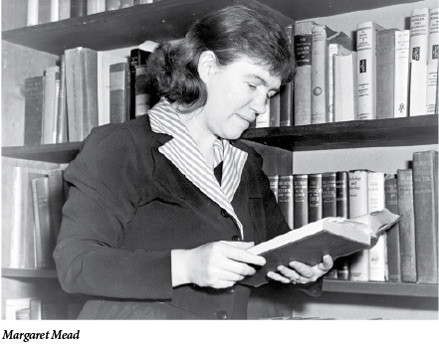
Zborowski’s first American job was at a factory but he was soon hired by Max Weinreich as a librarian at the YIVO Institute for Jewish Research and then brought under the benevolent wings of Ruth Benedict and Margaret Mead. Now he started to win grants from the Russell Sage Foundation, research stints at Cornell, Harvard, and the American Jewish Committee. He worked with Marshall Sklare, compiling a reader of Jewish ethnography, and they collaborated on the Riverton Study, a highly regarded examination of post-war American Jewish life. Norman Podhoretz recalls dining with him during this period of his life, shortly before news of his espionage surfaced, and he gave the impression of a man of confidence and self-assurance.
It was much the same self-assurance that he brought to Mead’s project, where, from the start, he exerted a decisive influence. It was, in fact, Zborowski who had persuaded Benedict to add Jews as a subject. At their weekly meetings, usually held at Mead’s Greenwich Village house, they sat for hours at a time patching together a consensual understanding of some of the most elusive features of Judaism. Few, except for Zborowski, had more than a sketchy knowledge of Jewish life. A notation at the close of the session held on December 7, 1947 reads, “A discussion then ensued concerning ‘authority’ [in Jewish communal life] and . . . whether or not it meant respect or fear. The general consensus . . . was that it was respect, rather than fear.” By mid-1949, support from the Navy had dried up and the group was still unclear about how to construct the book’s argument. “I just don’t trust our impressions give a valid picture,” stated Elizabeth Herzog, who would become Zborowski’s co-author, at a meeting in mid-1949. Half-jokingly, Herzog proposed that the book be entitled “Now I Understand My Mother.”
Confusion remained as to how to weigh the significance of modern versus traditional trends, or whether to discuss the many dozens of towns and cities mentioned in the interviews they’d conducted. By the late 19th-century, Jews in the region were increasingly clustered in large cities like Warsaw, Kiev, Minsk, and Odessa, or middle-sized towns, like Zborowski’s Uman, as well as shtetls. It was Zborowski who put an end to this confusion by imposing a definitive, if spurious, structure on their study. This was done most decisively in an otherwise rambling session in the summer of 1949, devoted, as it happens, mostly to prostitution, which unsurprisingly did not make its way into the book. (“Did prostitutes,” asked someone, “observe ritual rites [and go] to the mikvah?”) The following exchange would set the book on its course:
Mark Zborowski: I vaguely remember streets reserved for Jewish prostitutes and others for non-Jewish prostitutes in Lemberg.
Ruth Landes: But Lemberg is not a shtetl.
Naomi Chaitman: Yes.
Natalie F. Joffe: In Chortkov.
Margaret Mead: How big is Chortkov?
Zborowski: Population of about 15,000.
Mead: That’s a city!
Zborowski: The shtetl can be any size, if it’s big there can be sub-groups. But there is only the Jewish community. It’s not a place, it’s a state of mind. The problem of size is so different. You can’t use words ‘smaller’ and ‘bigger.’
Joffe: It’s interesting how informants time and again talk about the shtetl.
Elizabeth Herzog: Did people living there call it a ‘shtetl’?
Zborowski: No, ‘shtot.’ But the esprit was shtetl and the organization was shtetl. It’s not size at all.
Chortkov was, in fact, much smaller than Zborowski said it was. He often spoke at the meetings with more authority than knowledge. (Scholarly reviews of Life is with People would later note many such errors, some of them howlers.)
Still, Zborowski exerted decisive influence on all aspects of the book, none more than on its emphasis on social status. On rereading Life is with People, it is striking how pivotal this theme is to its portrait of Jewish life. Social stratification is, of course, a central theme in the social sciences, but it was Zborowski who thrust the issue into the heart of the group’s deliberations with an interest that seemed anything but dispassionate. At nearly every meeting of the group there was close analysis of the impact on religious and cultural life of “sheyne” and “proste” yidn. The index heading in Life is with People for “social stratification” lists sixteen subheadings, and the book lavishes no fewer than seven pages on who sits closest to the Eastern Wall in the synagogue (no wonder it was picked up on by the writers of Fiddler on the Roof).
Hence, we find close analysis of how sheyne yidn walk, pray, raise their voices, curse (they don’t), divorce (not often), why they prefer commerce to manual labor, how they clean their homes. “To call a house ‘sheyn’ means, not that its outward aspect is pleasing, but that the household is orderly, dignified, harmonious. . . . Obscene language, on the other hand, is referred to as ‘ugly’ words.” Status is born of a medley of factors that include money, of course, but also pedigree, learning, and comportment. Self-restraint is a commodity known best to the sheyne; the bad, unrestrained behavior of the proste can come perilously close to that of gentiles.
In the midst of this tepid, even cloying, book, then, is a surprisingly perceptive view of social gradations in Jewish culture, a difficult topic to pin-down yet one of critical importance, as one of the more original historians of Eastern European and American Jewish life has recently reminded us. Eli Lederhendler’s new book, Jewish Immigrants and American Capitalism: From Caste to Class, makes a persuasive case for the impact of mounting uncertainty about social stratification as one of the community’s most pressing, debilitating concerns. Its importance as an influence in the migration of millions of Jews from Eastern Europe has, as Lederhendler argues, been underestimated:
The social crisis in east European Jewry was the result of a protracted process going back at least to the 1850s, and entailed a gradual weakening of economic and social distinctions between petty trades and small artisans, and between artisans and laborers. Simultaneously, there was a widening gap between a very small, favored minority at the top and, below them, a population of several million of the underemployed, underfed, and under-statused. If the last years of the nineteenth century seem qualitatively different from what had come before, it is because of cumulative effects of decades of social dislocation capped by newly imposed government restrictions . . . brought about the loss of class itself.
Lederhendler’s insight is the product of hard historical labor, and keen analytical skill. Zborowski’s insights were, it seems, mostly intuitive.
True, much of Life is with People is an exercise in avoidance in its portrait of a way of life that Zborowski knew to be darker and more complex than the bright, Chagall-like hues in which he painted it. The book’s title is drawn from a chapter on the pleasures of community in a world where all knew everything about everyone else—”there are no secrets in the shtetl”—which was just the sort of place Zborowski would have deplored. Yet, embedded inside the book, too, is a story about class and status, sheyne and proste Yiden, that is probably as sincere as he would ever tell.
When Norman Podhoretz first heard that Zborowski was a spy he dismissed it as nonsense because at their meal Zborowski sounded like a Stalinist. Why, he asked himself, would he express such views openly if he was a spy? Disentangling truth from falsehood in the life of someone like Zborowski can never be done with anything close to certainty. His espionage career became known only because of the testimony of Alexander Orlov—the same informant who had contacted Trotsky years earlier. At first, Zborowski denied the charges, but once he learned of the evidence against him he admitted only to what the government already knew. He lied under oath before a Senate subcommittee, saying that his spying had come to an end in 1937—long before he came to the States. Later he claimed he couldn’t recognize a Soviet agent with whom he met at least fifty times because he was, as Zborowski put it, “too insignificant” to remember. He lied to Margaret Mead, a stalwart friend to the end, telling her he was forced to work for the Soviets because they threatened his Russian relatives. Years later, Mead’s daughter, Catherine Bateson, repeated the same story to me, which she had continued to believe. Much of the anthropological community supported him. One prominent anthropologist confronted Ignace Reiss’ wife at one of Zborowski’s trials and declared piously to her, “In this country we are against human sacrifice.” (Reiss was the would-be GPU defector who was gunned down on a country road outside Lausanne in 1937.) Charged with perjury, Zborowski was eventually convicted and sentenced to five years in prison, in 1963. He was released after less than two for good behavior.
Soon after his release from Danbury prison in 1965, Mark Zborowski had already become a figure to be reckoned with in San Francisco’s eager, messy world of experimental medicine, a patchwork of clinics and institutes marked by vast aspiration, and spotty oversight. Especially then, San Francisco was a place for new beginnings. Zborowski, Sorbonne-trained, a friend of the fabled anthropologist Margaret Mead, and the author of the by-then standard work on Eastern European Jewish life, stood out as a man of solidity and learning, a well-credentialed European refugee. With Mead’s support, he had been hired as a medical anthropologist by Mt. Zion Hospital, a well-regarded private institution in the city’s Fillmore district. Eventually, he became the co-director of its new Pain Center and wrote a book entitled People in Pain, a study of the intersection of medicine and culture in the lives of patients from different ethnic backgrounds (its chapter on Jews describes a people with unquenchable passion for complaint). The book solidified his clinical standing despite reviews, which ranged from equivocal to awful.
Zborowski remained something of an exotic, cosmopolitan presence: his Russian accent retained its thickness, he smoked incessantly, starting a new cigarette before the old one burned out, and nearly every evening he and Regina would begin their scotch. Although his son George had moved to Israel as an adult, he rarely visited him, complaining that the cuisine was terrible and that it was impossible to find a good drink. He tended to be known affectionately but also distantly as Dr. Z, and left the inaccurate impression that he had earned a doctorate in France. He and Regina resisted putting down permanent roots, rented and never bought, describing themselves as “Wandering Jews” though they lived in San Francisco for the last two and a half decades of their lives.
A graduate student who had worked closely with him, Kitty Corbett, now an anthropologist at Simon Fraser University, told me of a conversation they had late in his life and after she’d learned that he quit smoking. She asked if this was hard, given the extent of his habit. Zborowski replied that his doctor had ordered him to do so because of heart problems and he had stopped the same day. She prodded him a bit more—hadn’t it been difficult? He stared at her with the searching, fierce look he adopted when forced to say more about himself than he cared to reveal and then answered, “I have a self-image as a hero. And with a self-image as a hero, you can do what you do, and you never look back. You just move forward.”
Comments
You must log in to comment Log In
Suggested Reading
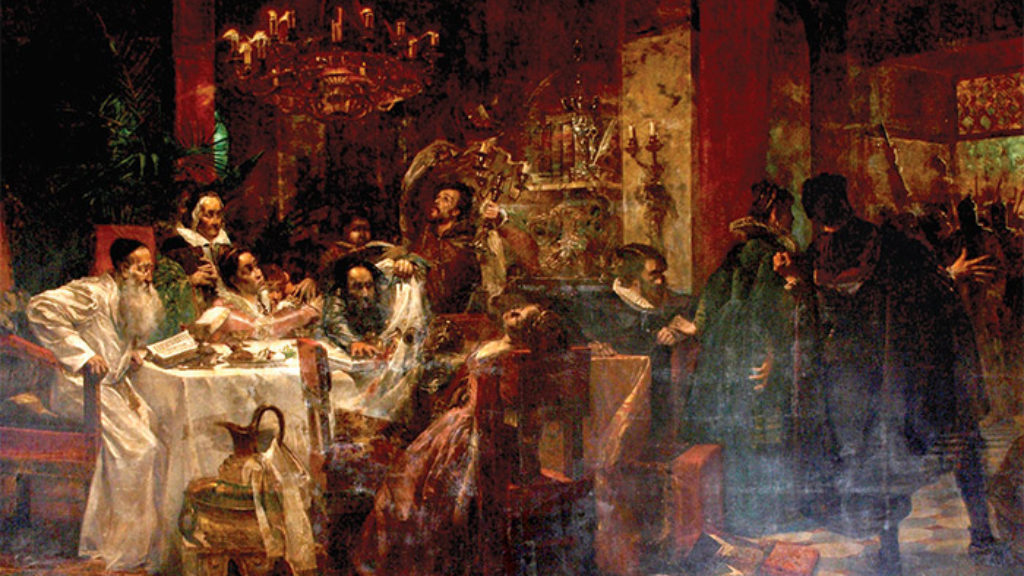
The Secrets of the Efod
How did it happen that some of the most brilliant anti-Christian polemics of the late Middle Ages were written by an (at least public) Christian?
One State?
Sari Nusseibeh's recent book is a new formulation of an old proposal.
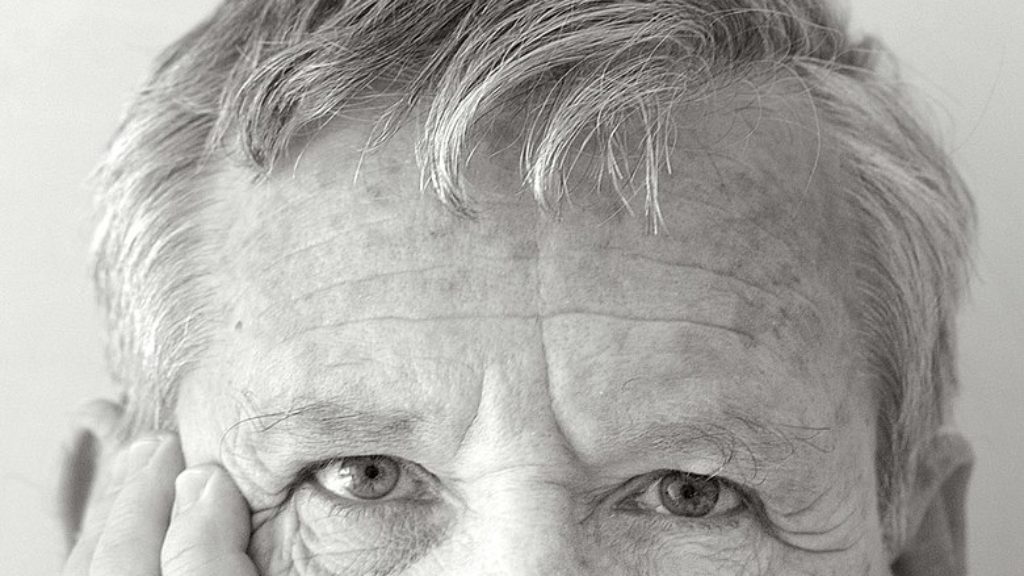
Agnon, Oz, and Me
Over the years, I’ve spoken privately with several Israeli novelists but with only two of the internationally famous ones. And these very brief conversations took place more than 40 years…
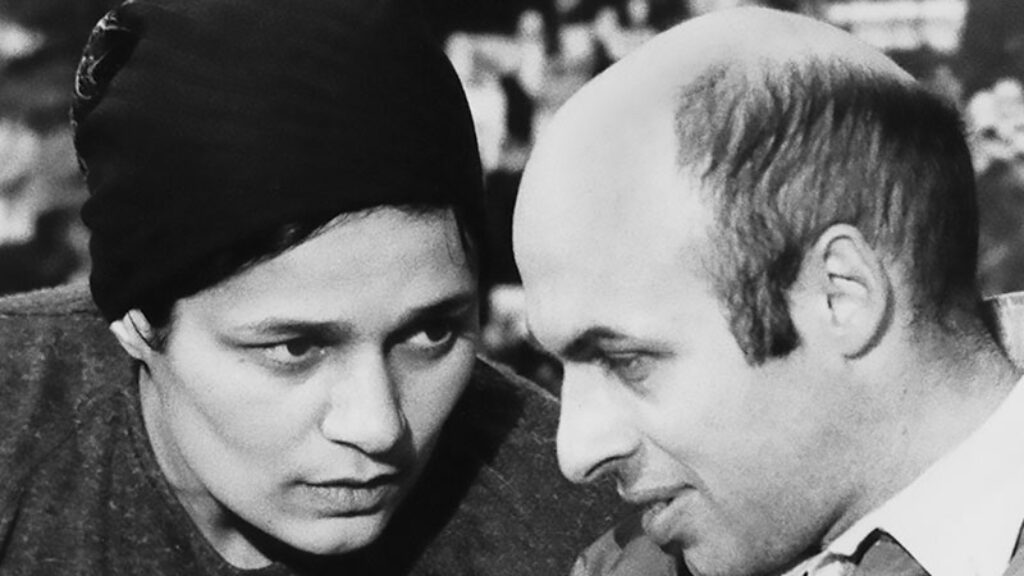
Sharansky’s Exodus
Witnessing the modern exodus of Jews from Ethiopia to Israel—different than his own but no less stirring—reminded Sharansky of what he’d told himself in his darkest days in prison: “Your history did not begin with your birth or with the birth of the Soviet regime. You are continuing an exodus that began in Egypt. History is with you.”
d_s_chapman
Re the final paragraph, I can only say: with heroes like this, who needs villains?
Maggie Anton
It was only when I saw that the other comment was from 2016 that I realized that his article is from over 10 years ago. But I found it fascinating nevertheless since my parents came from that world, although their families fled when they were too young to remember it. Thus the recollections they shared with me were romanticized based on "Life is With People." I still have their 1962 paperback copy, although I have never read it.